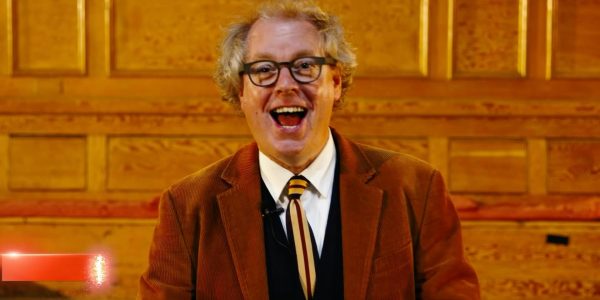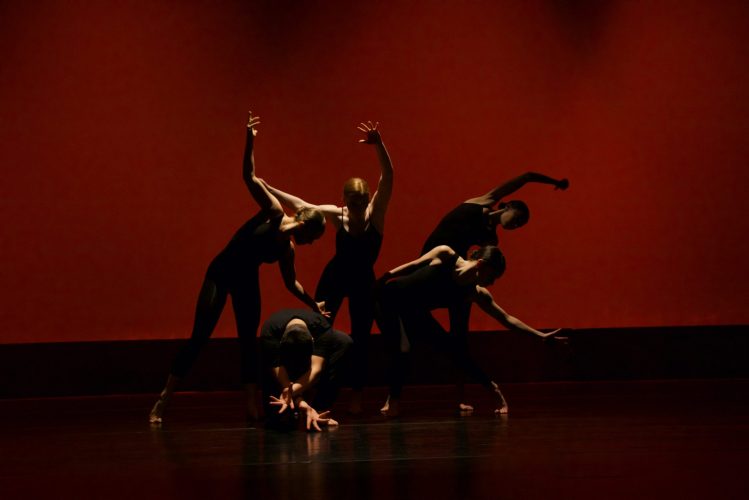It’s no secret that dancing strengthens the immune system as any form of exercise does, but dancing also combats stress, fatigue and anxiety. And, guess what! It will improve your social-emotional skills too.

Numerous studies have shown that movement – physical activity – has myriad positive effects on the body. And, by virtue of the fact that it’s a fun activity, one would assume dance must be therapeutic (studies establish this too). But on ‘The Dancing Brain’, a recent episode of my podcast, psychologist Dr Peter Lovatt adds to this. “Our brain is specialised for human movement, and therefore it’s no surprise that when you stimulate the brain by movement, it stimulates other areas of the brain,” he says, pointing out that dance contributes to improvements in decision making skills, attention span, creativity, and even one’s ability to focus.

Numerous studies have shown that movement – physical activity – has myriad positive effects on the body. And, by virtue of the fact that it’s a fun activity, one would assume dance must be therapeutic (studies establish this too). But on ‘The Dancing Brain’, a recent episode of my podcast, psychologist Dr Peter Lovatt adds to this. “Our brain is specialised for human movement, and therefore it’s no surprise that when you stimulate the brain by movement, it stimulates other areas of the brain,” he says, pointing out that dance contributes to improvements in decision making skills, attention span, creativity, and even one’s ability to focus.

Advancement movement therapist Tripura Kashyap observed this in action with a student of hers who has autism. The teenager’s capacity to concentrate improved significantly, Kashyap noticed – and she progressed from being limited to 20 minute-sessions to sailing through 40 minute-sessions in some six months. A 2021 study supports this: it shows that dance is tremendously beneficial in treating various disorders, including autism spectrum disorder [ASD].
Express yourself
According to the American Dance Therapy Association (ADTA), dance therapy promotes health by unifying all aspects of a person: physical; mental; emotional and social. The theory is premised on the idea that it is not possible to separate the body from the mind, and hence, changes in the body must affect the mind and vice versa. An article in Medical News Today points to another study that spanned across 41 clinical trials and showed that dancing helps curb anxiety and depression and improves cognition, interpersonal skills and quality of life. The report also indicates that these benefits might be long-term.
See also: Bushra Khan’s episode on anxiety

Kashyap agrees. She says that aside from the sheer enjoyment of it, people turn to dance to address various concerns. For one person, dance could help make them more physically active, while for another, it might enhance the ability to express himself or herself emotionally. On my podcast ‘Dance Heals’ celebrated Bollywood choreographer and founder of Victory Arts Foundation, Shiamak Davar says “Besides the physical healing which is important, dance also goes a long way to boost one’s confidence”.
Chicago-based dance therapist Erica Hornthal, who is also known as ‘The Therapist Who Moves You’, shares: “Once they trust the process, my clients have seen immense benefits from tapping into the wisdom of the body; it speaks a language and when given the opportunity to be heard, holds unlimited potential for healing.” When Hornthal has clients come to her with issues like anxiety, she invites them to identify its rhythm and intensity, encouraging them to move it to different parts while focusing on breathing. One of her clients described the experience as, “learning to speak her body’s internal language; trying to talk to it rather than ignoring it”.

Kashyap agrees. She says that aside from the sheer enjoyment of it, people turn to dance to address various concerns. For one person, dance could help make them more physically active, while for another, it might enhance the ability to express himself or herself emotionally. On my podcast ‘Dance Heals’ celebrated Bollywood choreographer and founder of Victory Arts Foundation, Shiamak Davar says “Besides the physical healing which is important, dance also goes a long way to boost one’s confidence”.
Chicago-based dance therapist Erica Hornthal, who is also known as ‘The Therapist Who Moves You’, shares: “Once they trust the process, my clients have seen immense benefits from tapping into the wisdom of the body; it speaks a language and when given the opportunity to be heard, holds unlimited potential for healing.” When Hornthal has clients come to her with issues like anxiety, she invites them to identify its rhythm and intensity, encouraging them to move it to different parts while focusing on breathing. One of her clients described the experience as, “learning to speak her body’s internal language; trying to talk to it rather than ignoring it”.
Time to heal

“Movement is very important. It signifies life.”
- Tripura Kashyap, movement therapist and author of My Body My Wisdom

“Movement is very important. It signifies life.”
- Tripura Kashyap, movement therapist and author of My Body My Wisdom
Dancing has an almost magical power to heal, but you can’t see immediate results from it if you only do it for a day, the experts say. Hornthal discusses that it’s a practice and a lifestyle — she prefers to meet her clients for an hour each week, typically.
Kashyap adds, “Movement is very important. It signifies life.” But how long it takes to enjoy the benefits of any dance practice, Kashyap says, would depend on a person’s objectives. “While it may take three to six months for one person to reap the benefits he or she is looking for, it may take someone else a year or longer to see improvements in another area of life. But this shouldn’t stop you from moving rhythmically from time to time”. In fact, Kashyap encourages her clients to practise movement rituals for at least 10 minutes a day, on their own, apart from attending her sessions.
If you’re thinking about when you should start dancing, the correct answer, as Dr Lovatt says, “from birth”, but if you missed that bus, he says, “start now. The best time to start is at your current age”. He also offers an idea of how much dance would really help: “To impact the brain positively, one should dance three times a week for 20 minutes”.
Dance with design
“Dance is a nonverbal form of communication and expression that we are born with. It doesn't require skill or talent”.
- Erica Hornthal, dance therapist and author of Body Aware


“Dance is a nonverbal form of communication and expression that we are born with. It doesn't require skill or talent”.
- Erica Hornthal, dance therapist and author of Body Aware
Dr Lovatt points out that different dance styles and movements impact the brain differently. For those looking to stimulate their creativity, he recommends improv –where you go with the flow and enjoy impromptu moves — while for problem-solving, he believes one would see benefits by coordinating dance moves with others in a group . “This way, they’ll work together, building a bridge and sharpening their group problem-solving skills”. Hornthal offers another reason to dance with others: “Dance is a nonverbal form of communication and expression that we are born with. It doesn’t require skill or talent”.
See also: Sanjana Chatlani’s Lettering and Brain function episode

Kashyap, on the other hand, has created what she calls a ‘Movement Activity Basket’. It features activities that tackle specific therapeutic objectives. Taking a movement assessment test, she understands the needs and creates a rough curriculum for her people to follow.
On the other hand, Hornthal states that dance is about an individual’s movement, with everyone having their own signature move. She says, “We can work to uncover a unique signature and build a more robust repertoire to support resilience, empathy, and compassion.” Although every expert may have different ways to inculcate dance into your routine, their end goal remains the same: for you to reap the mental and physical benefits.
Of course, it’s vital to ensure you don’t hurt yourself. Davar has created a pre-emptive workout to ensure his students are safe. “With my workout, I will strengthen your knee, lower back and neck in such a way that you don’t face issues in the future”.
Still wondering how dance can help heal? Tune into my episode with Shiamak Davar: Dance Heals, and Dr Peter Lovatt: The Dancing Brain to know more about the benefits.

